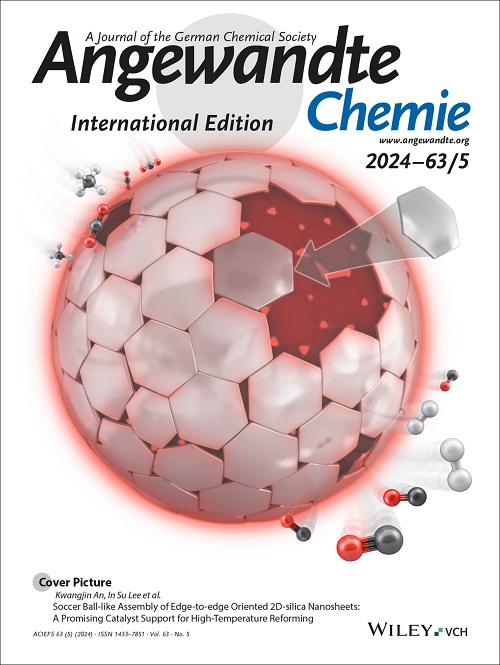Comprehensive Profiling of Roquin Binding Preferences for RNA Stem-Loops
IF 16.1
1区 化学
Q1 CHEMISTRY, MULTIDISCIPLINARY
引用次数: 0
Abstract
The cellular levels of mRNAs are controlled post-transcriptionally by cis-regulatory elements located in the 3'-untranslated region. These linear or structured elements are recognized by RNA-binding proteins (RBPs) to modulate mRNA stability. The Roquin-1 and -2 proteins specifically recognize RNA stem-loop motifs, the trinucleotide loop-containing constitutive decay elements (CDEs) and the hexanucleotide loop-containing alternative decay elements (ADEs), with their unique ROQ domain to initiate mRNA degradation. However, the RNA-binding capacity of Roquin towards different classes of stem-loops has not been rigorously characterized, leaving its exact binding preferences unclear. Here, we map the RNA-binding preference of the ROQ domain at nucleotide resolution introducing sRBNS (structured RNA Bind-n-Seq), a customized RBNS workflow with pre-structured RNA libraries. We found a clear preference of Roquin towards specific loop sizes and extended the consensus motifs for CDEs and ADEs. The newly identified motifs are recognized with nanomolar affinity through the canonical RNA-ROQ interface. Using these new stem-loop variants as blueprints, we predicted novel Roquin target mRNAs and verified the expanded target space in cells. The study demonstrates the power of high-throughput assays including RNA structure formation for the systematic investigation of (structural) RNA-binding preferences to comprehensively identify mRNA targets and elucidate the biological function of RBPs.全面剖析 Roquin 与 RNA 干环的结合偏好
mRNA 的细胞水平在转录后受位于 3'- 非翻译区的顺式调节元件控制。RNA 结合蛋白(RBPs)可识别这些线性或结构性元素,从而调节 mRNA 的稳定性。Roquin-1和-2蛋白利用其独特的ROQ结构域特异性地识别RNA茎环图案、含三核苷酸环的组成性衰变元件(CDE)和含六核苷酸环的替代性衰变元件(ADE),从而启动mRNA降解。然而,Roquin 与不同类别茎环的 RNA 结合能力尚未得到严格鉴定,因此其确切的结合偏好尚不清楚。在这里,我们利用 sRBNS(structured RNA Bind-n-Seq)在核苷酸分辨率上绘制了 ROQ 结构域的 RNA 结合偏好图,sRBNS 是一种使用预结构化 RNA 文库的定制 RBNS 工作流程。我们发现 Roquin 对特定环大小有明显的偏好,并扩展了 CDE 和 ADE 的共识基团。通过典型的 RNA-ROQ 界面,新识别出的主题具有纳摩尔级的亲和力。以这些新的茎环变体为蓝图,我们预测了新的 Roquin 目标 mRNA,并在细胞中验证了扩展的目标空间。这项研究展示了高通量检测(包括 RNA 结构形成)在系统研究(结构)RNA 结合偏好以全面鉴定 mRNA 靶标和阐明 RBPs 生物功能方面的强大功能。
本文章由计算机程序翻译,如有差异,请以英文原文为准。
求助全文
约1分钟内获得全文
求助全文
来源期刊
CiteScore
26.60
自引率
6.60%
发文量
3549
审稿时长
1.5 months
期刊介绍:
Angewandte Chemie, a journal of the German Chemical Society (GDCh), maintains a leading position among scholarly journals in general chemistry with an impressive Impact Factor of 16.6 (2022 Journal Citation Reports, Clarivate, 2023). Published weekly in a reader-friendly format, it features new articles almost every day. Established in 1887, Angewandte Chemie is a prominent chemistry journal, offering a dynamic blend of Review-type articles, Highlights, Communications, and Research Articles on a weekly basis, making it unique in the field.

 求助内容:
求助内容: 应助结果提醒方式:
应助结果提醒方式:


